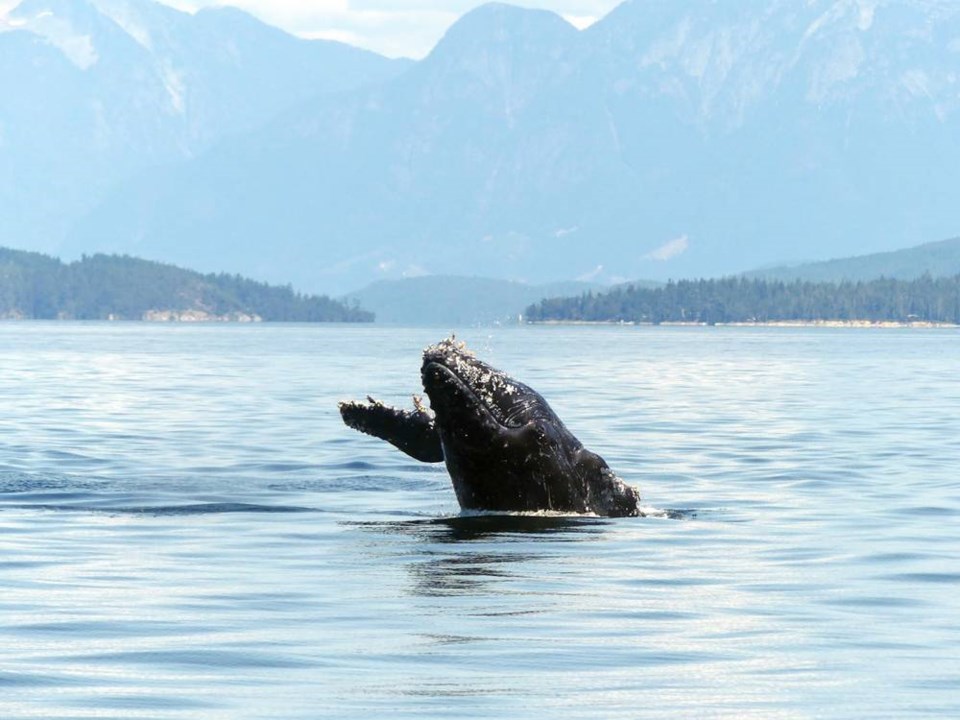Researchers hope the death of a humpback whale that was hit by a large vessel leads to lower speeds for ships around areas where the cetaceans feed.
The corpse of a two-year-old humpback known as Halfpipe was discovered near Swiftsure Bank on Friday with deep lesions along his body consistent with injuries sustained from the propeller of a large ship. A necropsy was performed by Fisheries and Oceans Canada the next day.
“While this is a sad story, we are happy to have found him because dead whales usually don’t tell tales,” said Jackie Hildering, humpback researcher with Port McNeill-based Marine Education and Research Society. “Dead whales usually don’t typically wash up on shore — they typically sink to the bottom of the ocean and are lost to science.”
Hildering said while Halfpipe’s death was tragic, it can serve as a wake-up call to mariners to learn about the whales’ behaviour and take extra precautions when around the mammals.
“Most people think of orcas when they think about whales around here,” said Hildering. “Orcas travel in pods — humpbacks are more solitary. Orcas dive for up to eight minutes, while humpbacks can stay underwater for up to 20 minutes at a time.”
She said people often assume large whales like humpbacks are aware of boats and will move out of the way, but baleen whales are “vastly” more likely to be hit than orcas, which use biosonar (or echolocation) for locating objects near them. Along with collisions, they are also at risk of being entangled in fishing gear.
Humpbacks are one of the larger members of the baleen whale family. An adult female can measure between 12 and 17 metres and weigh up to 45 tonnes, about the size of a school bus. Their common name is derived from the curve of their backs when diving. The first part of their Latin name (Megaptera novaeangliae) refers to their large front flippers.
In Canada, they are listed as a species of special concern. The population was hunted to near extinction until legislation was enacted in 1967 to protect them.
Research conducted between 2004 to 2006 indicated a seasonal population of around 2,100 in British Columbia waters, increasing by around four per cent per year.
In the last few years, humpbacks are more likely to be spotted in coastal B.C. waters from June 1 to Oct. 31, feeding on mostly krill and small fish.
Every year, they migrate to tropical or subtropical waters — Hawaii, Mexico or South America — to breed and give birth. The group that migrates to Mexico is recognized as a distinct threatened population in the United States.
Swiftsure Bank, near where Halfpipe’s body was found, is a nutrient-rich area where whales feed that’s known as the “Smorgasbord of the Pacific.” It’s a recognized habitat for endangered southern resident killer whales and threatened northern resident killer whales.
It’s also a major thoroughfare for large cargo ocean-going ships and tankers.
The area does have a voluntary slow-down zone for outbound maritime traffic.
“Mariners need to understand that they need to change course or at least slow down when transiting the feeding grounds. Whales won’t always get out of their way — with tragic consequences,” said Hildering.
- - -
To comment on this article, send a letter to the editor: [email protected]



